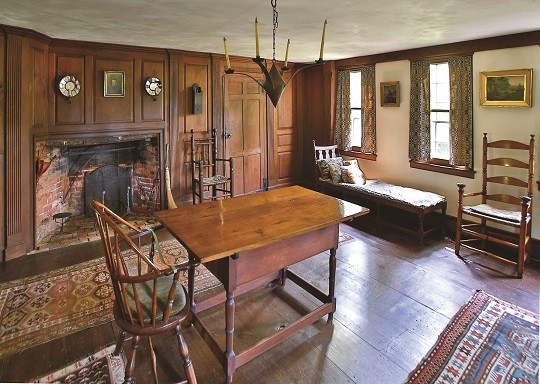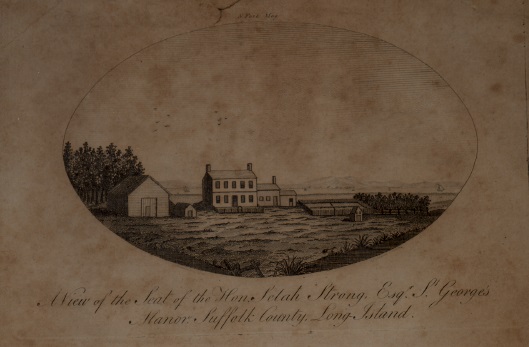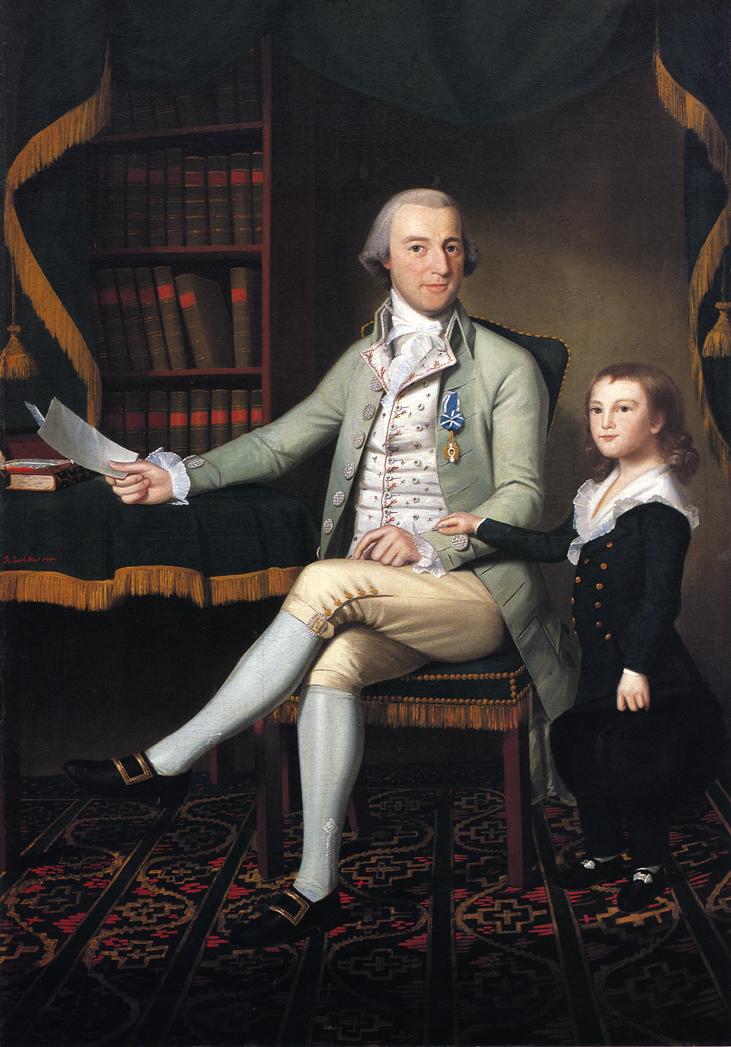Every September, organizations across Long Island come together for Culper Spy Day to celebrate the contributions of General George Washington’s band of Long Island spies during the Revolutionary War. To celebrate Culper Spy Day, we are taking a look at items in our collections connected to members of Long Island’s legendary ring of spies.
Benjamin Tallmadge

In 1926, Preservation Long Island founder Howard C. Sherwood (1870–1957) installed fielded paneling salvaged from the purported birthplace of Benjamin Tallmadge (1754–1835), George Washington’s director of military intelligence, inside the living room of the Sherwood-Jayne House (ca. 1730) in East Setuaket, his Long Island country retreat.
Benjamin Tallmadge was born on February 25, 1754 in Setauket. He was the second son of Susannah Smith (1729–1768) and Reverend Benjamin Tallmadge, Sr. (1725 –1786), a local clergyman. Tallmadge studied at Yale University where he befriended future spy Nathan Hale (1755–1776). Tallmadge first saw action in the Revolutionary War at the Battle of Long Island (also known as the Battle of Brooklyn), a crushing Patriot defeat that led to the British occupation of Long Island and New York City.
Later promoted to Washington’s chief intelligence officer, Tallmadge’s mission was to obtain information on fortifications, troop movements, and other military operations from the British headquartered in Manhattan. The chain of spies he assembled on Long Island consisted of several childhood friends from Setauket, including Abraham Woodhull (1750–1826), Caleb Brewster (1747–1827), Anna Strong (1740–1812), and Austin Roe (1749–1830).
Austin Roe
The eighteenth- and early nineteenth-century version of the laptop, this mahogany portable writing desk is signed by its original owner, Robert Smith Gardiner (1786–1824), son of Dr. Nathaniel Gardiner (1759–1804) and Elizabeth Dering (1762–1801). The handled box, which measures approximately two feet wide by one foot deep, opens to reveal a green wool felt-like writing surface and compartments for storing documents, ink, and quills.

Originally acquired by Howard Sherwood in 1941, the desk came from “the old Deering house at East Setauket, formerly Roe’s Tavern. . .” Austin Roe (1749–1830), the owner of the tavern, was closely connected to espionage on Long Island. He served as a courier for the spy ring, often travelling between New York City and Setauket delivering materials and information to and from Robert Townsend (1753–1838), alias Samuel Culper Jr., who operated a Manhattan shipping firm, and Abraham Woodhull (1750–1826), alias Samuel Culper, Sr. The tavern provided a convenient excuse for Roe’s repeated business in New York City. In 1790, George Washington stayed at Roe’s Tavern during his tour of Long Island.
Anna and Selah Strong
Selah Strong’s (1737–1815) five-bay manor house at Strong’s Neck in Setauket was the original seat of St. George’s Manor. This engraved depiction of the estate appeared in the October 1792 issue of the New York Magazine and is one of the earliest published views of Suffolk County architecture.

Strong was a captain in the New York militia, fought at the Battle of Long Island, and was later captured. On January 3, 1778, James Rivington’s (ca. 1724–1802) The Royal Gazette reported that Strong was imprisoned in a New York City sugar house as a presumed spy. He was eventually released and fled to Connecticut, leaving his wife, Anna Smith Strong (1740–1812), and their children behind on Long Island. Strong would return to Setauket before the war’s end to serve as president of the Town of Brookhaven Trustees.
In 1780, British officers occupied the manor house. It was one of the grandest homes in the area and conveniently located for surveilling activity on land and water. Although the Strongs did not own the property located on what was then Seaton’s Neck, it is possible they lived at the manor. In 1785, Selah Strong purchased the land and estate at auction.

Anna Strong is believed to have played a vital role in the activities of the spy ring. Although she is not directly referenced in surviving historical records, the Strongs were Patriots, community leaders, and friends and neighbors of the Brewsters and Woodhulls. Some researchers suggest that Anna assisted Abraham Woodhull convey messages from New York City to George Washington in New Windsor, NY.
The Culper Spy Ring successfully operated in and around occupied New York City for five years. Intel prevented a British expedition into Rhode Island and ultimately led to the capture of British spy, Major John André (1750–1780). Throughout the war, Washington remained ignorant of the identities of his Long Island informants.
By Lauren Brincat, Curator, Preservation Long Island
